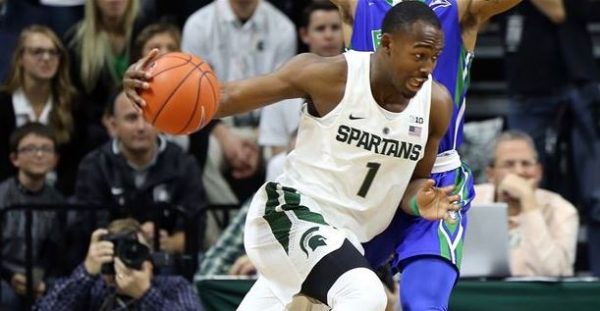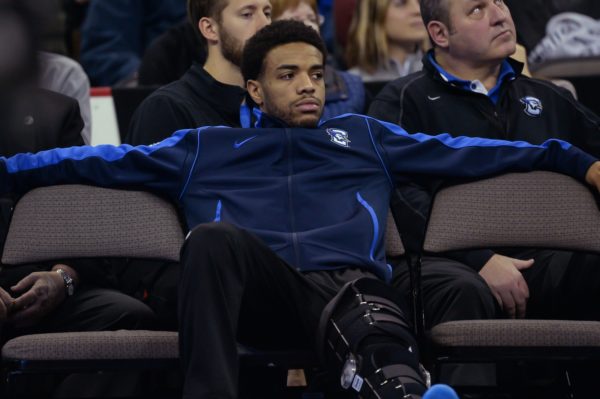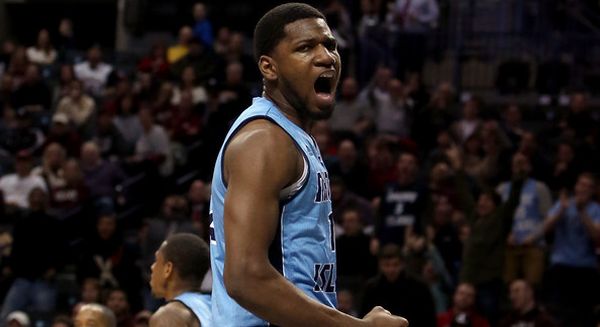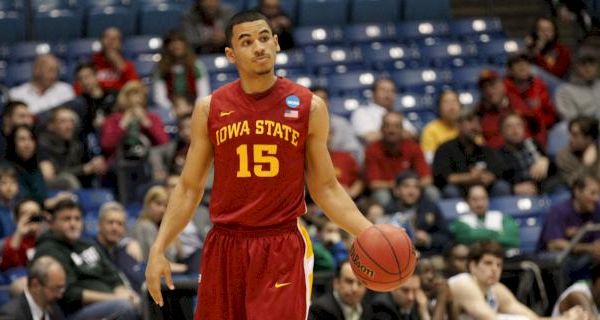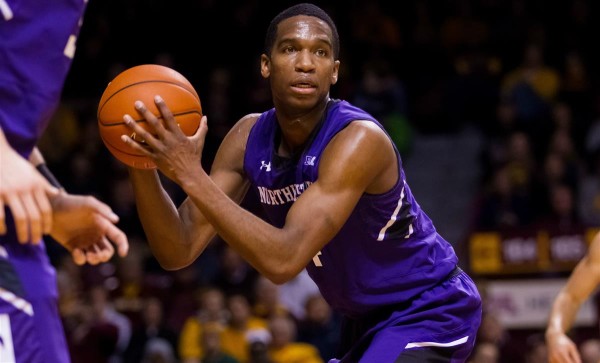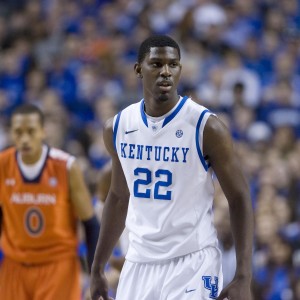Posted by Jim Root on November 9th, 2016
The losses Michigan State sustained after last year’s disappointing First Round NCAA Tournament exit would cripple most programs: a national Player of the Year (Denzel Valentine), the Big Ten’s best three-point shooter (Bryn Forbes), a stout senior interior presence (Matt Costello), and a one-and-done freshman (Deyonta Davis). Fortunately, Tom Izzo was able to reload with perhaps his best recruiting class ever, and along with some veteran returnees, it looks as if the Spartans once again have a team capable of winning the Big Ten and making a run in March.
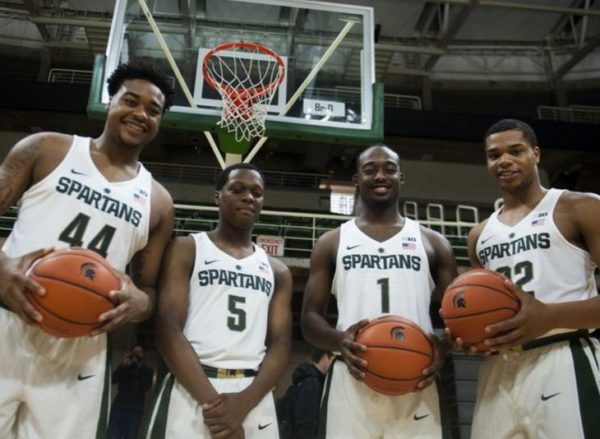
Michigan State’s excellent freshman class will need to be good right away for Tom Izzo’s short-handed squad. (Source: Detroit Free Press)
Not so fast. Injuries have already struck hard to the Spartans’ frontcourt, sidelining UNLV graduate transfer Ben Carter and senior Gavin Schilling with knee ailments before exhibition games even tipped off. Both figured to see extensive minutes at the four and five slots, and the loss of both leaves Izzo in a precarious position with his frontcourt rotation. Right now it basically consists of two true freshmen (albeit highly-regarded ones): 6’7” Miles Bridges, 6’8” Nick Ward, and 6’6” redshirt sophomore (and former walk-on) Kenny Goins.
The best version of this team’s lineup probably involves Bridges at the four and Ward at the five, although Izzo will likely go with Goins as the nominal center to start (for example, he started against Northwoods). Bridges will be a matchup nightmare up front, too quick for big men and too strong for wings. He has a smooth lefty stroke from the perimeter (going 5-of-5 from deep in the first exhibition game), and he can also grab a defensive rebound and push the ball up the floor by himself. Most of all, he’s an insane athlete – the height he gets when leaping and the sheer power with which he dunks are awe-inspiring. Ward, on the other hand, is a more traditional post player. He’s got great touch around the basket with his left hand and has proven capable of playing above the rim. Given his girth (listed at 250 pounds), he has the best chance of slowing opposing big men, but Izzo will still be forced to double-team against the likes of burly Big Ten bodies such as Ethan Happ, Isaac Haas and Thomas Bryant.
Read the rest of this entry »
| big ten, feature, microsites
| Tagged: injuries, Kenny Goins, michigan state, Miles Bridges, Nick Ward, spartans, tom izzo
Share this story





























